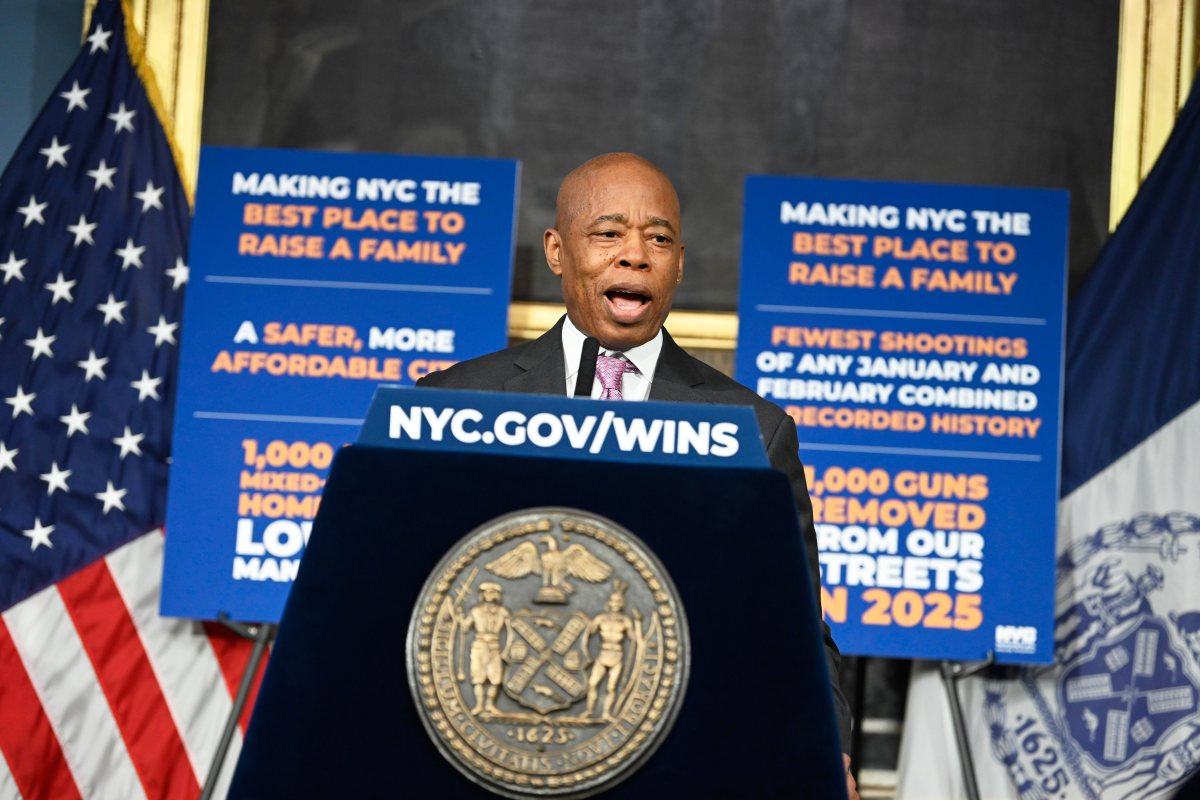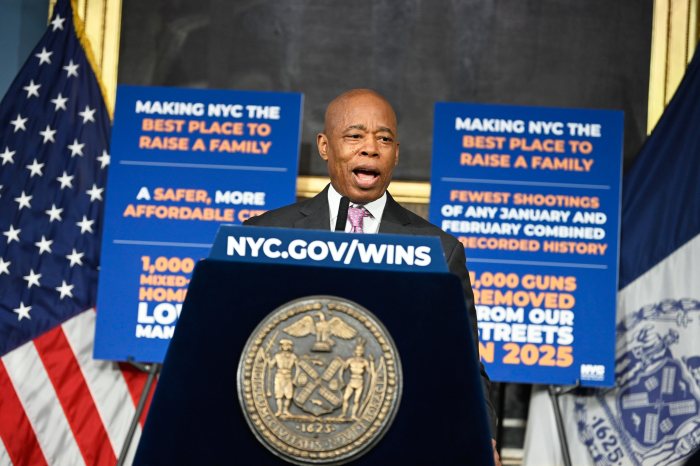The free public-school lunch is off to college.
Administrators at a city community college are nourishing the minds — and bodies — of its most vulnerable students with a newly created food pantry where those in need of something to eat can stock up on essential groceries for free.
Leaders of Borough of Manhattan Community College — which serves more students from Brooklyn than its home borough, according to a spokesman — opened the Panther Pantry inside the school’s Single Stop student-resource center in Manhattan in April, and stock its shelves with items including pasta, beans, canned fruits and vegetables, cereal, tins of tuna and chicken, and milk and milk alternatives, all of which they offer to students who can’t afford to buy the goods on their own.
“We have on a sheet of paper all of the items that are in the pantry, and students have a choice,” said Deborah Harte, who runs Single Stop and its pantry named for the college’s mascot. “They can come to the pantry and actually see the things, or can check the list off in the office, and we’ll go pack a bag for them.”
The need for such a facility was extremely apparent, according to another college administrator, who said the institution has assisted more than 600 students with food insecurities in recent years, either by helping them apply for New York State’s Supplemental Nutrition Assistance Program, or by giving them gift cards to local supermarkets that are subsidized by the school’s emergency fund.
Many of the students come from public high schools, where meals are often provided for food-insecure pupils, making it difficult to fend for themselves when they arrive on campus, the administrator said.
“When they leave the high school and they come to us, we’ve decided we don’t handle food insecurities, which is irresponsible because we know it has to do with retention and graduation,” said Dr. Marva Craig, the c ommunity college’s vice president of student affairs.
And the pantry doesn’t just feed students themselves — its stewards ask eligible users how large their households are, allocating provisions based on that number, Craig said.
“A mother may come, but it’s not the mother alone who’s hungry in the household,” she said. “One student may be walking out with two bags, and one may be walking out with a half-bag because of the household.”
But the purpose of the operation isn’t to offer a quick hunger fix, according to Harte, who said school staffers want to help pantry users pinpoint why they can’t make ends meet, and work toward permanently solving those problems.
“Our goal is not only to address the immediate hunger issue,” she said. “We also want to be sure we’re helping the students to devise a more sustainable plan. Sometimes it’s unemployment that put them in the situation, so we put them in the career-development department.”
One theater student who recently graduated from the college cheered the pantry and its creators for providing her with groceries — and the necessary tips to prepare them in meals with higher nutritional values.
“I’ve struggled with the fact I could either pay for my tuition or eat,” said Mia, who requested anonymity and did not give her last name. “I would do this trick where I would just have water and bread. Having the pantry, I’ve now learned how to make food that could last for three or four days.”
And another student studying early-childhood education at the school said its pantry helped her through a recent financial emergency, after an unexpected move forced her to pay a deposit and rent for a new apartment, leaving her with little cash left over for food.
“It became a very tight budget,” said Panagiota, who also requested anonymity and did not give her last name. “Obviously, the food pantry didn’t cover my whole month, but it gave me my breakfast. It gave me juice for a week. It gave me pasta and some vegetables I could use. So it gave me a little bit of room not to worry about ‘Am I getting some food?’ ”
Mia said the Panther Pantry is the first one that she’s felt comfortable enough to use — feedback not lost on its founders, who said a focal point in launching it was to reduce the stigma often associated with having to stand in line at public food banks.
“We enjoy food, we love food, but when we’re in need of food, it’s not a comforting feeling,” said Craig. “There is no pride in not being able to afford it. So what we’ve done is we’ve brought everything to the college campus where there’s no stigma.”
The Panther Pantry is open to Borough of Manhattan Community College students Mon–Fri, from 9 am to 5:30 pm. For more information, visit www.bmcc.cuny.edu.

























